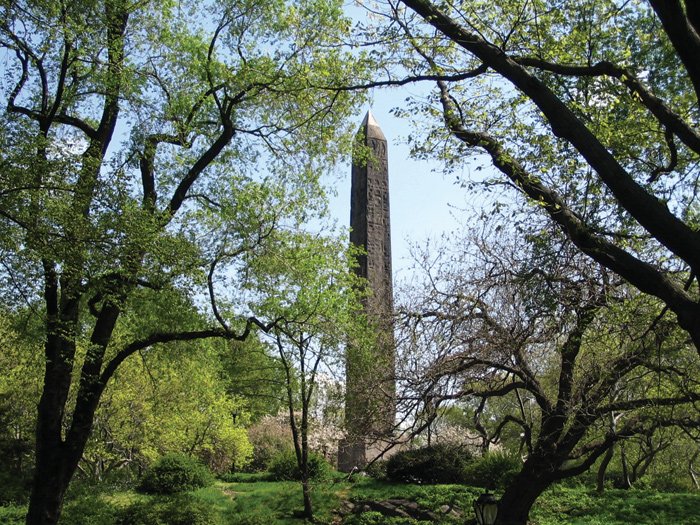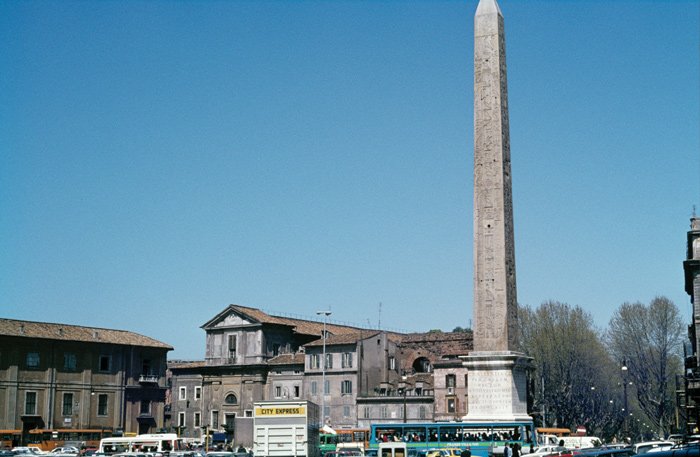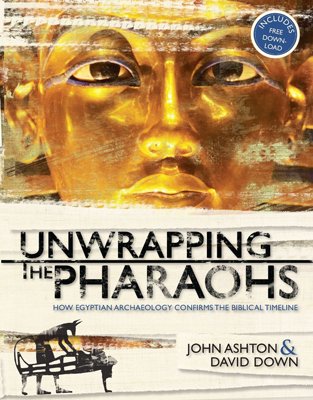
Chapter 17
The Greatest of All the Pharaohs
Thutmosis III was the son of Thutmosis II and a secondary wife, Queen Iset.
We glean this information from the writing on his mummy. He was a born genius and soon learned to read and write the complicated hieroglyphic script of Egypt. His age when his father died is not known for certain. Egyptologists speculate anything between 3 and 12 years. Whatever his age, he was too young to assume royal authority, and Hatshepsut did the rest, though Thutmosis III was crowned king as soon as his father died. He may have been about 30 when Hatshepsut died and he became sole ruler.

Thutmosis III should be identified with the Shishak who looted the temple of Jerusalem (1 Kings 14:25). On the outside wall of his shrine Thutmosis depicts the loot he took. Many items correspond with the treasures listed in the Bible as being in Solomon’s temple.
By the traditional chronology he would have been contemporary with Moses who was taken out of the Nile by the daughter of Pharaoh Hatshepsut, but this is pure speculation. There was no place for Moses in this scenario, for Thutmosis III was crowned king as soon as his father died.
In any case, Thutmosis did not take long to assert his authority and swing into military action. He had been crowned king on the death of his father, Thutmosis II. He considered himself the rightful king from that time onward, and dated the years of his reign from then. Hatshepsut had reigned for 22 peaceful years, and in his first year of sole reign, Thutmosis marched northward at the head of his army. On the wall of his chapel in the Temple of Karnak he left a record of his conquest of 119 cities.
Year 22, 4th month of the second season, day 25. [His majesty passed the fortress of] Sile on the first campaign of victory [which his majesty made to extend] the frontiers of Egypt. . . . Year 23, 1st month of the third season, day 16. As far as the town of Yehem. [His majesty] ordered a conference with his victorious army, speaking as follows: That [wretched] enemy of Kadesh has come and has entered into Megiddo. He is [there] at this moment. He has gathered to him the princes of [every] foreign country [which had been] loyal to Egypt, as well as [those] as far as Naharin and Mittani, them of Hurru, them of Kode, their horses and their armies and their people, for he says—so it is reported—I shall wait [here] in Megiddo [to fight against his majesty]. Will you tell me [what is in your hearts]?
Well, what was in their hearts was a little different from what Thutmosis had in mind. They were apprehensive about marching through the narrow pass leading to Megiddo. They timidly suggested that there might be a less dangerous pass to go through the Carmel Range, but the daring Thutmosis would not hear of it. He made them cringe with his challenging reply.
“That which was said in the majesty of the court—life, prosperity, health—I swear, as Re loves me, as my father Amon [Amen can also be spelled Amun or Amon] favors me, as my [nostrils] are rejuvenated with life and satisfaction, my majesty shall proceed upon this Aruna road. Let him of you who wishes come in the following of my majesty. Behold, they will say, these enemies whom Re abominates, has his majesty set out on another road because he has become afraid of us? So they will speak.”
It was too much for their pride to accept. They affirmed their intention to follow their king into the jaws of death. “They said in the presence of his majesty, may thy father Amon, Lord of the thrones of the two lands, presiding over Karnak, act [according to thy desire]! Behold, we are following thy majesty everywhere that [thy majesty] goes, for a servant will be after his lord.”
The actual passage through the pass is not recorded, but it was apparently achieved without incident, for the next we hear is of a grand parade of troops on the plains of Megiddo. This was probably to overawe the defenders, and it seems to have had the desired effect.
“Year 23, 1st month of the third season, day 21, the day of the feast of the true new moon. Appearance of the king at dawn. Now a charge was laid upon the entire army to pass by. . . . His majesty set forth in a chariot of fine gold adorned with his accoutrements of combat, like Horus the mighty of arm, a lord of action like Montu the Theban, while his father Amon made strong his arms. Thereupon his majesty prevailed over them at the head of his army.”
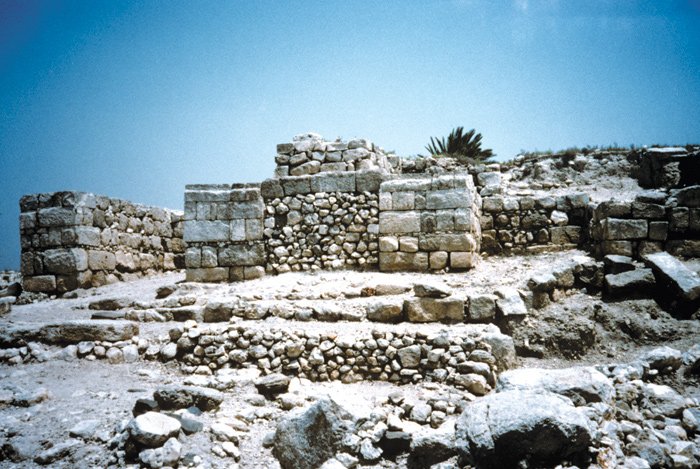
Megiddo in Israel was one of the most important cities in Old Testament times. Thutmosis describes his conquest of Megiddo as “the capturing of a thousand towns.” Recent excavations have restored the gateway of Megiddo.
Panic set in among the defenders and they fled in disorder, but it seems the defenders inside the walls of the city were intent on saving their own skins and slammed shut the gates of their city to prevent any of the attackers getting in. The fleeing troops were obliged to scale the walls by cloths that were let down to haul them up.
Then they saw his majesty prevailing over them, and they fled headlong [to] Megiddo with faces of fear. They abandoned their horses and their chariots of gold and silver so that someone might draw them [up] into this town by hoisting on their garments.
The Egyptian victory would have been faster and even more complete had not the troops been intent on trying to appropriate the spoils of war for themselves.
“Now the people had shut this town against them [but] they [let down] garments to hoist them up into this town. Now if only his majesty’s army had not given up their hearts to capturing the possessions of the enemy they would [have captured] Megiddo at this time, while the wretched enemy of Kadesh and the wretched enemy of this town were being dragged [up] hastily to get them into the town, for the fear of his majesty entered [their bodies], their arms were weak, [for] his serpent diadem had overpowered them.”
Thutmosis was elated. He wrote in glowing terms of his victory.
“The capturing of Megiddo is the capturing of a thousand towns. . . . Now the princes of this foreign country came on their bellies to kiss the ground to the glory of his majesty and to beg breath for their nostrils because his arm was so great, because the prowess of Amon was [so] great over every [foreign] country.”
One problem with this inscription is the identification of the king of Kadesh, who seemed to have been the head of the coalition that defended Megiddo against Thutmosis. Kadesh is usually identified with Tell Nebi Mend on the Orontes River in Syria, but this Kadesh was not a very important city, and one would wonder why the king of Kadesh would be so intent on defending Megiddo, 322 miles (200 km) to the south.
Velikovsky maintained that the chronology of Egypt should be drastically reduced making Thutmosis III contemporary with Solomon’s son Rehoboam.1 The record in 1 Kings 14:25–26 said, “It happened in the fifth year of King Rehoboam, that Shishak king of Egypt came up against Jerusalem. And he took away the treasures of the house of the Lord and the treasures of the king’s house; he took away everything. He also took away all the gold shields which Solomon had made.”
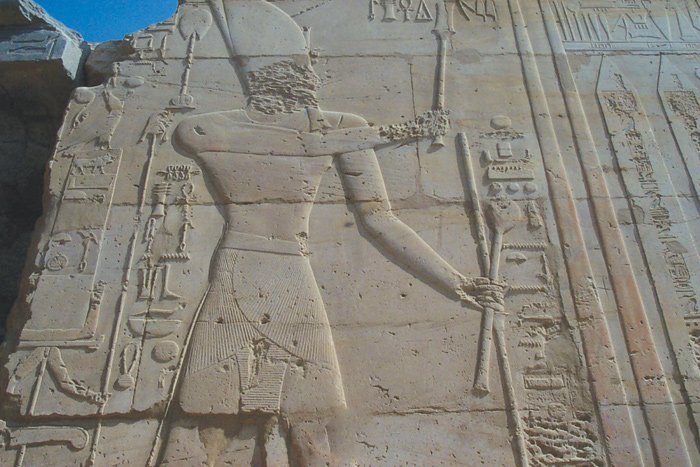
Thutmosis III presenting his trophies to the god Amun.
There is no record in the Bible of Shishak fighting against Jerusalem or capturing it. He simply came to Jerusalem and plundered it. The crucial battle had taken place at Megiddo, and all Thutmosis had to do was help himself to the fabulous treasures of Solomon’s temple and palace.
Velikovsky points out that Thutmosis left a pictorial record on his wall at Karnak of the loot he brought back to Egypt, and the list is consistent with the treasures listed in the biblical record.2 On his wall are listed 300 gold shields, and 1 Kings 10:17 says that Solomon “made three hundred shields of hammered gold.” Thutmosis depicted doors overlaid with gold, and 1 Kings 6:32 says that “The two doors were of olive wood; and he carved on them figures of cherubim, palm trees, and open flowers, and overlaid them with gold.” Also the cups, bowls, pans, and implements shown on the Egyptian wall are what could have been used in the temple in Jerusalem.
Moreover, Kadesh is the Hebrew word for “holy,” and Jerusalem is frequently referred to in the Bible as the Holy City. The angel Gabriel told Daniel “Seventy weeks are determined for your people and for your holy city [Kadesh]” (Daniel 9:24). Nehemiah wrote that the leaders “cast lots to bring one out of ten to dwell in Jerusalem, the holy city [Kadesh]” (Nehemiah 11:1). Isaiah wrote, “They call themselves after the holy city [Kadesh]” (Isaiah 48:2). There are many similar references. It could be that the king of Kadesh was Rehoboam, king of the holy city of Jerusalem.

A golden box with staves is reminiscent of the ark which Moses made for the sanctuary (Exodus 25:10–13).
The Shishak of the Bible is usually identified with Pharaoh Sheshonq of the 22nd Dynasty of Egypt, who left a list of cities on the south wall of the temple of Karnak, which depicts him presenting conquered cities to his god, Amun. But there is no mention here of the city of Jerusalem, and the list seems to be a stereotyped collection of names that he copied from other inscriptions. In fact, the Mittani, who are included in his list, ceased to exist as a nation 400 years before Sheshonq made his relief.
Actually, the date for Sheshonq’s reign cannot be determined from Egyptian records. He has only been allocated to the time of Rehoboam because he has been identified with the Shishak of the Bible, but some scholars refute the idea that the similarity in names is significant.
Thutmosis left some impressive monuments to perpetuate his name—statues, sphinxes, obelisks, and buildings—but his mummy shows him to have been rather diminutive for the mighty warrior he must have been, an Egyptian Napoleon, only about 5’8” in height (1.6 m), rather remarkable for such a successful warrior.

In the temple of Karnak is the festal hall built by Thutmosis. It originally contained a king-list which is now in the Louvre in Paris.
He was not a prolific builder. His most notable achievement was the festal hall in the Karnak temple. At one end of this hall there was inscribed a list of 61 kings who had preceded him in the history of Egypt. King-lists were not uncommon in Egypt. Pharaohs regarded them as giving credence to their own reigns. This inscription was removed by the French and is now in the Louvre in Paris.
His relief on the wall of his shrine in Karnak depicts two obelisks that he erected, though we know that he actually erected seven obelisks in Egypt. Four of them have since gone to foreign countries. The most notable one is on the bank of the Thames in London, incorrectly known as Cleopatra’s Needle. It was shipped there in 1877.
His largest obelisk now stands in front of the St. John Lateran Church in Rome. It is 105 feet (32 m) in height and must weigh about 455 tons, and the top half was originally gold plated. Another of his obelisks was taken to New York, and yet another still stands in Istanbul, though the lower portion of it is missing. An interesting feature of this obelisk is the relief on the side of the pedestal on which it stands. It shows the obelisk being transported to Turkey on a papyrus raft. It was sent there by the Emperor Julian in A.D. 390.
But there is one aspect of Thutmosis’ reign that has puzzled modern scholars. Hatshepsut ruled for a total of 22 years, continuing as pharaoh well after Thutmosis reached maturity. Even after Hatshepsut disappeared from the scene he seemed quite content to maintain her dignity and station. He did ultimately send his men round the land of Egypt, smashing her statues, vandalizing her temple, and erasing her name from her monuments, but he did not do this until the 17th year of his sole reign. Why did he wait so long to vent his rage on his predecessor?
Dennis Forbes has written an article in which he addresses this question.3 Whereas most Egyptologists have pictured a frustrated Thutmosis, waiting on the side lines for Hatshepsut to die (some have suggested he might have had her assassinated), Forbes is of the opinion that a very amicable relationship existed between them.
Concerning Thutmosis’ childhood, Forbes wrote, “Young Thutmose was probably more than content to be off in his own wing of the royal residence, playing at war with his toy soldiers, or else out on the practice field learning to shoot a bow, throw a javelin, and, best of all, to drive his own chariot.”4 What teenager is not eager to drive his own vehicle?
Even when he came to the throne as sole ruler, far from venting his rage on Hatshepsut for supposedly keeping him in limbo, “He completed decorating two of Hatshepsut’s unfinished constructions: her memorial temple (Djeser-Djeseru) at modern-day Deir el Bahari and the barque chapel housing the cult statue of Amen-Re at Ipet-Isut.”5
It is also true that the moment he came to the throne he immediately embarked on a foreign military campaign. This suggests that he was already commander-in-chief of the army, and had he any malice against Hatshepsut he surely would have been in a position, with the army behind him, to depose her.
But the reason for his apparent hostility to Hatshepsut’s memory in his later years is still hard to explain. He not only smashed her monuments in an apparent paroxysm of fury, but did his best to erase her name and memory from Egyptian history. He dated his own activities, not from the time he assumed the throne as sole ruler, but from his coronation as a child. He deleted her name from monuments and replaced them with the name of his father or grandfather. In short, “This essentially involved the making of circumstances and events as they SHOULD HAVE BEEN rather than as they were—which meant the elimination of all evidence of a co-regency between himself and the woman who had co-opted the kingship by styling herself a female Horus.”6

Another obelisk went to Istanbul. It stood on this base on which was depicted the papyrus raft on which it was floated to its site.
So why this hostile reversal? Was it a sudden about-face by Thutmosis himself, or was it perhaps heavy pressure from some vindictive official who had some personal grudge against Hatshepsut, or who perhaps resented female oligarchy?
Not even this great pharaoh could escape the grim reaper, and he made due preparation for the afterlife. He had his tomb, KV34 in the Valley of the Kings, cut in a very inaccessible cleft of the rocks above the other tombs in the valley. Many of the wall pictures in his tomb were unfinished at the time of his death. He was more preoccupied with military campaigns than in burial arrangements. He died in the 54th year of his reign, at about the age of 65—quite a ripe old age for the pharaohs who did not usually have a long life span.
Many of the pictures in his tomb are nothing more than line drawings, but it is this very feature that has been of value to archaeologists. It has been possible to observe how the artists went about their work. His beautiful sarcophagus is still well-preserved in his tomb, though tomb robbers did their deadly work. Soon after his burial, grave robbers plundered his tomb and tore all his limbs from their sockets and separated both arms at their elbows. His feet are still missing, his nose has gone, and his head was wrenched from his shoulders.

At the end of the Valley of the Kings is a cleft in the rock. Near the top Thutmosis had his tomb carved out of the rock.
Thutmosis III conducted 17 military campaigns against Palestine and Syria, making him the greatest of all the pharaohs. He not only conquered and looted the cities he attacked, but he also established Egyptian authority over them. From then on, tribute flowed into the Egyptian coffers, enabling subsequent pharaohs to erect huge temples and create beautiful tombs in the Valley of the Kings. Rameses II may have been the greatest builder of all time, but he could not have done this without the previous conquests of Thutmosis, who converted Egypt from a great nation into a powerful empire, with tribute flowing into the Egyptian coffers.
Unwrapping the Pharaohs
Adults and children alike are fascinated by Egyptian civilization. But most modern archaeologists have lately tried to use Egyptian chronology to dispute the biblical record. Secular textbooks and videos challenge the faith of students and discredit the biblical account of Exodus. Those who wish to defend the accuracy of the Bible now have an incredible tool in this exciting book that provides compelling confirmation of the biblical account.
Read Online Buy BookFootnotes
- Velikovsky, Ages in Chaos, p. 142–7.
- Ibid., p. 148–154.
- Forbes, “Menkheperre Djehutymes: Thutmosis III, A Pharaoh’s Pharaoh,” KMT (A Modern Journal of Ancient Egypt), vol. 9, no. 4 (1998): p. 44-65.
- Ibid., p. 49.
- Ibid., p. 54.
- Ibid., p. 62.
Recommended Resources

Answers in Genesis is an apologetics ministry, dedicated to helping Christians defend their faith and proclaim the good news of Jesus Christ.
- Customer Service 800.778.3390
- © 2024 Answers in Genesis



